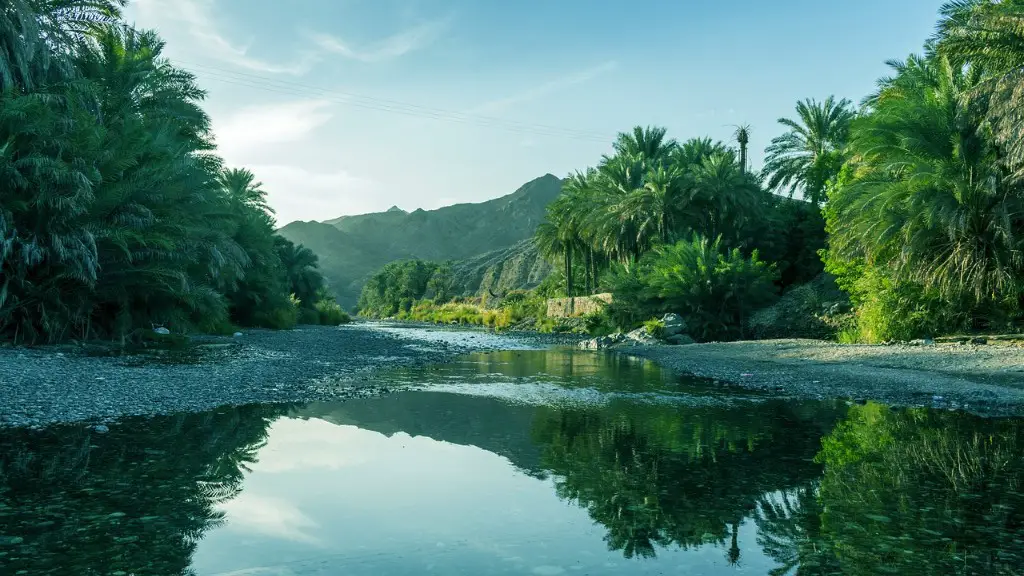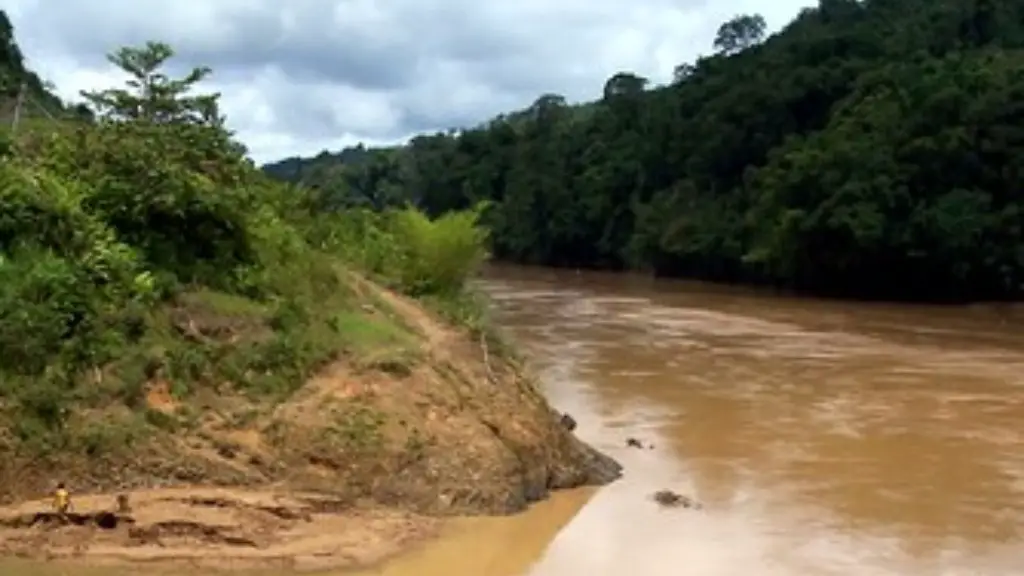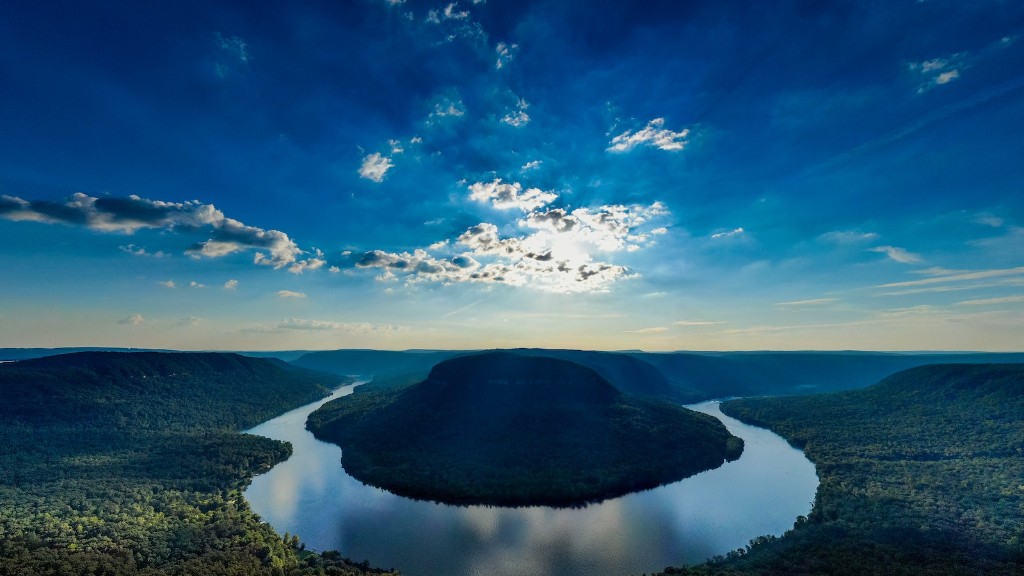The Yangtze River is the longest river in Asia and third longest in the world. It stretches a total of 6,300 kilometres from the glaciers of the Tibetan Plateau in the west along its course to the East China Sea.
Its source is located at the Jianggendiru Glacier on the Tibetan Plateau at an elevation of 5,004 metres, in western Sichuan near the boundary of Qinghai and Tibet Autonomous Regions. On its eastward path, it passes through several provinces, including Sichuan, Hubei, Anhui, Jiangsu and Shanghai, before draining into the East China Sea near Shanghai city.
The river has a varied and turbulent history. In ancient times it supported the kingdom of Chu, and has been the birthplace of many great Chinese civilisations. It has been an important transportation corridor and a major source of food and water for centuries.
Today the Yangtze is still an essential lifeline, providing water and transport necessaries to millions of people that live along its banks. It’s also a major source of hydroelectric power. According to some estimates, as much as one third of the entire nation’s hydro-power is generated from the Yangtze.
It is estimated that 38% of the total population of China lives in the Yangtze River watershed, making it an incredibly densely populated area. There are over 550 cities, towns, and villages that line the river.
The river is also home to incredible biodiversity. There are over 3,000 species of fish and amphibian and over 20 species of mammals and reptiles living within the Yangtze River ecosystem. The Impeyan pheasant, Chinese alligator and Chinese giant salamander are some of the critically endangered species found in the region.
The Yangtze also has a major impact on the climate in the region. It acts as a cooling agent, moderating the temperature along its banks and providing much needed rain during the dry season. The river is also known to be the source of floods and drought, with severe flooding events happening periodically due to rapid glacial melting.
Man-made Impact on the Yangtze
The human population of this area has had a massive impact on the Yangtze over the past few decades. Major cities such as Shanghai, Nanjing, and Wuhan are located on its banks, and their population influxes have caused an increase of pollution and sedimentation in the river.
The Yangtze is also the site of the infamous Three Gorges Dam, the largest dam in the world. It was constructed in stages between 1994 and 2012 and is intended to generate a large amount of hydroelectric power. The dam has had a major impact on the river, such as blocking the flow of sediment and disrupting the migratory patterns of many species of fish.
It has also caused localised flooding and caused problems such as erosion and land subsidence, affecting areas downstream from the dam. The dam has also had an effect on the social, economic, and environmental aspects of the region.
Despite its negative impacts, the Three Gorges Dam still serves as an important source of hydroelectric power and has helped to regulate water levels during droughts and floods. It is also an important tourism destination, attracting thousands of tourists each year.
Environmental Protection and Conservation
The government and environmental conservation organizations in China are taking major steps to protect the Yangtze. The Chinese government has passed several laws to regulate hydropower development on the Yangtze and to reduce the effects of pollution and climate change. The government also established the Yangtze River Protection Foundation to promote environmental awareness and protection initiatives.
There are also several NGOs and environmental organizations working to protect the Yangtze. The World Wildlife Fund (WWF) has set up a project called “Reviving the Yangtze River” which works to restore wetland habitats, restore endangered species populations, and improve watershed health.
The Nature Conservancy (TNC) is also working in the region to protect and restore the Yangtze river ecosystem. They are involved in planting trees to reduce soil erosion and restoring riparian habitats to protect the river from pollution.
Rising Sea Levels and Global Warming
Climate change is having a major impact on the Yangtze River, with rising sea levels and increasing temperatures. This can have devastating effects, such as increased flooding, saltwater intrusion, and a decrease in wildlife habitats. The Chinese government has been looking into ways to mitigate the effects of climate change on the river, but many argue that more should be done.
The WWF has also been looking into ways to protect the Yangtze as a result of global warming. They have developed strategies such as switching to clean energy sources and reforesting the river banks to prevent flooding and reduce erosion.
Tourism
In the last few decades, tourism along the Yangtze has grown significantly. Tourists flock to the river for its spectacular beauty and to experience the rich cultural heritage of the region. There are now many cruise ships that offer scenic tours down the length of the river.
One of the main attractions for tourists is the Three Gorges Dam, as it offers a stunning view of the river and its surrounding landscape. The cruise ships pass beneath the immense dam, offering amazing views of the Gorges and the river beyond.
The Yangtze also offers a great opportunity to experience Chinese culture. There are many cities and towns along the banks of the river, each with their own stories and traditions. Getting to know the people and experiencing the rich culture of the region is a sight to behold.
Conclusion
The Yangtze River is a vital part of China, both economically and culturally. It has been the birthplace of many great Chinese civilizations and is an essential source of food, water, and electricity for millions of people who live along its banks. It is also home to a plethora of biodiversity and a major source of tourism for the region.
Climate change is having an ever-increasing effect on the Yangtze, with rising sea levels, increasing temperatures, and more frequent flooding. The Chinese government and many NGOs are making great strides to protect the river and its inhabitants, but more needs to be done to reduce the impacts of climate change.





